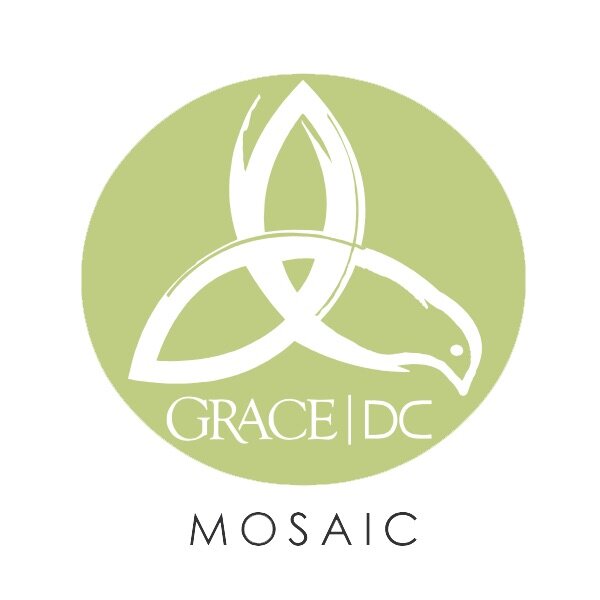Advent: Nurturing the Hidden Life
“The Lord is with you.”
-Luke 1:28
The season of Advent can, for many of us, have a contradictory feel to it. On one hand, we are told that it is a season of waiting; a season of contemplative silence and penitential stillness in anticipation of the Christmas celebration that is to come. And we try. We light Advent candles. We play Advent music. We pray Advent prayers. And we try, oh how we try, to settle ourselves into an Advent frame of heart. On another hand, we know from experience that it is one of the most frantic and exhausting seasons of the year; a season of distracting noise and endless motion in preparation for the Christmas celebration that is to come. We help children with school. We buy presents. We decorate rooms. We send cards. We finish year-end work projects. And we fall into bed, desperate to settle into a few hours of forgetful sleep. In my own life, both of these are true. And not only true, but necessary; each is given to me by God. As a result, I have spent the better part of every Advent of my adult life with the frustrating sense of being pulled apart; pulled inward into silence even as I am pulled outward into a life of noise. And so every year a question arises within me: How can I learn to live both lives at once? How can I live in stillness and in motion at the same time?
In thinking of this this week I turned, as I do every year, to Mary. Apart from our Lord, she is my absolute favorite person in the Bible. The first to welcome Christ. Faithful in nurturing His life within her. Confused and broken-hearted, and yet present with him from beginning to end. She is the first and perhaps loveliest of Jesus’ followers. What we see most of her, however, takes place in that mysterious and holy time between the Annunciation (the time when she first learns of the hidden life growing within her) and the Nativity. And it is in this space—the space of Mary’s own personal Advent—where we can learn about how to live our own Advent.
On one hand, her life is—by any measure—out of control. Consider: She is a young woman, betrothed to a man, and yet pregnant (it seems) from another man. She takes refuge for several months in her aunt Elizabeth’s house who, as you may remember, is in the midst of her own crisis of an unexpected pregnancy and a newly-mute husband. She then has to travel while “great with child” to the distant city of Bethlehem with her husband and is unable to find a place to stay. During the stay, while lodging in a stable, she gives birth to her child, attended only by her husband. Shortly thereafter she finds herself playing host to a group of local shepherds and foreign princes who drop in for an impromptu baby shower. Oh, and don’t forget that after the shower is over, an angel warns her husband that a murderous king is after them, and tells them to flee to Egypt. She, in other words, understands what it means to have a stressful Advent.
And yet on the other hand, in the midst of all this, Mary quietly nurtures the life of Christ within her. She dreams of motherhood. She lays in bed and watches her tummy grow. She puts Elizabeth’s hand on her womb to feel the baby move. She adjusts her posture on the way to Bethlehem to give the baby room. She steps into the stable and begins to rearrange the place in anticipation. She looks at Joseph and says, “It’s time.” She makes room for her visitors. She prepares for the flight to Egypt. And each of these acts of attending to the presence of Christ takes place not apart from, but within the burdens of her life.
I love this for two reasons. First, because it reminds us that our experience of Advent—the frustrating and embarrassing experience of struggling between contemplation and action—is actually original to Advent, fundamental to its very meaning; that this struggle, this longing, this weight is its essence. And as I enter into that struggle, seeking to hold the life of Christ within me and my life within the world together, I am actually doing Advent’s essential work. And secondly, I love Mary’s story because it reminds me that this work of Advent is within our reach. It is possible to live our ordinary, harried, and burdened lives and to experience the hidden life of Christ not elsewhere, but precisely there. And this means that it is in the midst of our lives—doing our jobs, tending our children, caring for our bodies, welcoming our neighbors, remembering our loved ones—and not in some idealized contemplative space, that Christ is present with us. It is here that the Angel of the Lord says to us, as he said to Mary, The Lord is with you.” It is here that the mystery of Christ grew. It is here that God sends blessed guests, and necessary help. It is here that we will see the very face of Christ.
As we enter into this Advent life together, let’s do so remembering that the Lord is with us, pondering and treasuring this presence, and rejoicing in the secret knowledge that the hidden work that we do now will, in time, bear the holiest of fruit.

